Animals in caves
So far 48 different identified cave species have
been found in the Basel and Laufen region.
On closer inspection it becomes apparent that most of them are only temporary visitors. The most famous of them are the bats, which use the caves as roosts and winter quarters.
The animals can be divided into three groups:
genuine cave animals, troglophiles and trogloxenes.
Only five of the 48 animals are genuine caveadapted
animals, all the others are troglophiles.
Genuine cave animals (Troglobites)
These animals dwell exclusively in caves and are unable to survive on the outside. They are adapted to life underground, as is apparent, e.g., in the loss of skin pigmentation, the partial or total reduction of eyes, elongation of the organs of touch or smell, and in lower breeding rates than in surface dwelling types. The group is further divided into stygobiontic (living in water) and aerobiotic (land-living) types, such as crabs, worms and springtails.
The olm (European salamander) occurs only in caves in Slovenia and Croatia.
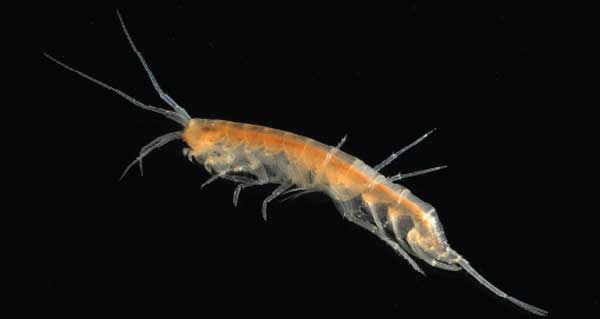 Amphipods Niphargus. These crabs get their food
Amphipods Niphargus. These crabs get their foodmainly from preying on smaller cave dwellerse Foto Rémy Wenger |
|
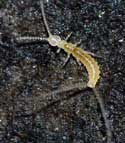 |
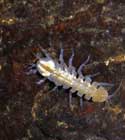 |
Diplura (Campodea staphylinus)Foto Joe Botting |
Freshwater isopod, (Asellus cavaticus) Foto Miriam Widmer |
Bats in this region
Although bats are able to fly, they have
more in common with man than with birds. They are mammals. They give birth to live young, suckle their babies, and their bodies are densely covered with hair.
Caves, galleries and crevices in rockfaces are important habitats for many of the 30 native bat species.
The caves in Switzerland are too cool for the rearing of young, but they provide frostfree winter-quarters for Daubenton’s bats, brown long-eared bats, greater mouseeared bats and others. All native bats are insecteaters. They hibernate between November and February, when food is scarce. Hibernating bats live in a state of metabolic depression, relying on their fat reserves. When the high humidity in their living quarters condenses on their fur, they appear to be dead. Such bats must never be disturbed. The waking-up process consumes a large amount of energy which, due to the lack of food, is impossible to replenish
Troglophile animals
Such animals are temporary cave-dwellers or live in cave entrance regions, because they favour the protection, the regular temperature and the constant high humidity in the caves and crevices. They have not adapted to the total darkness in the cave, so some of them leave the site to find food or to mate, some live in the light of the entrance region or only come to hibernate. They include some bats, spiders, birds, gnats, beetles and butterflies.
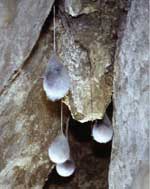 |
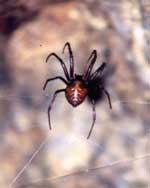 |
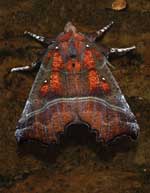 |
The cocoons of the cave spider Metidae hang from |
The cave spider Meta menardi is widespread in our |
Herald moths, Scoliopterix libatrix) /Foto: J.V.W. Bäuchle> |
|
||
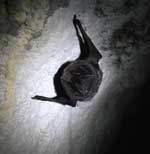 |
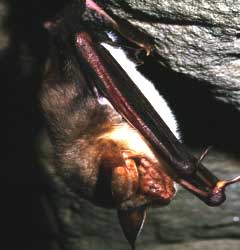 |
|
| Barbastelle bat (Barbastella) Foto: Christophe Brossard |
Greater mouse-eared bat (Myotis myotis)Foto: www.fledermaurschutz.ch |
|
Trogloxenes
These are only brief visitors to cave entrances. They are unable to exist in caves. Some land there only accidentally, e.g. fall into a crevice or shaft, are washed into the cave or carried in by other animals. They are unable to survive for long and die quickly. They thereby become part of the subterranean life-cycle in the form of food for the other two groups..
 |
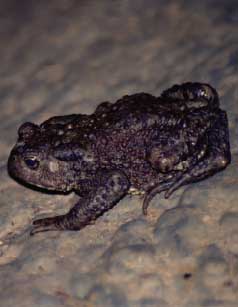 |
||
A fire salamander that has fallen into a shaft (a trogloxene) Foto: J.V.W. Bäuchle. |
A toad in the Réclère cave in the Jura (a trogloxene animal) Foto: Patricia Huguenin |